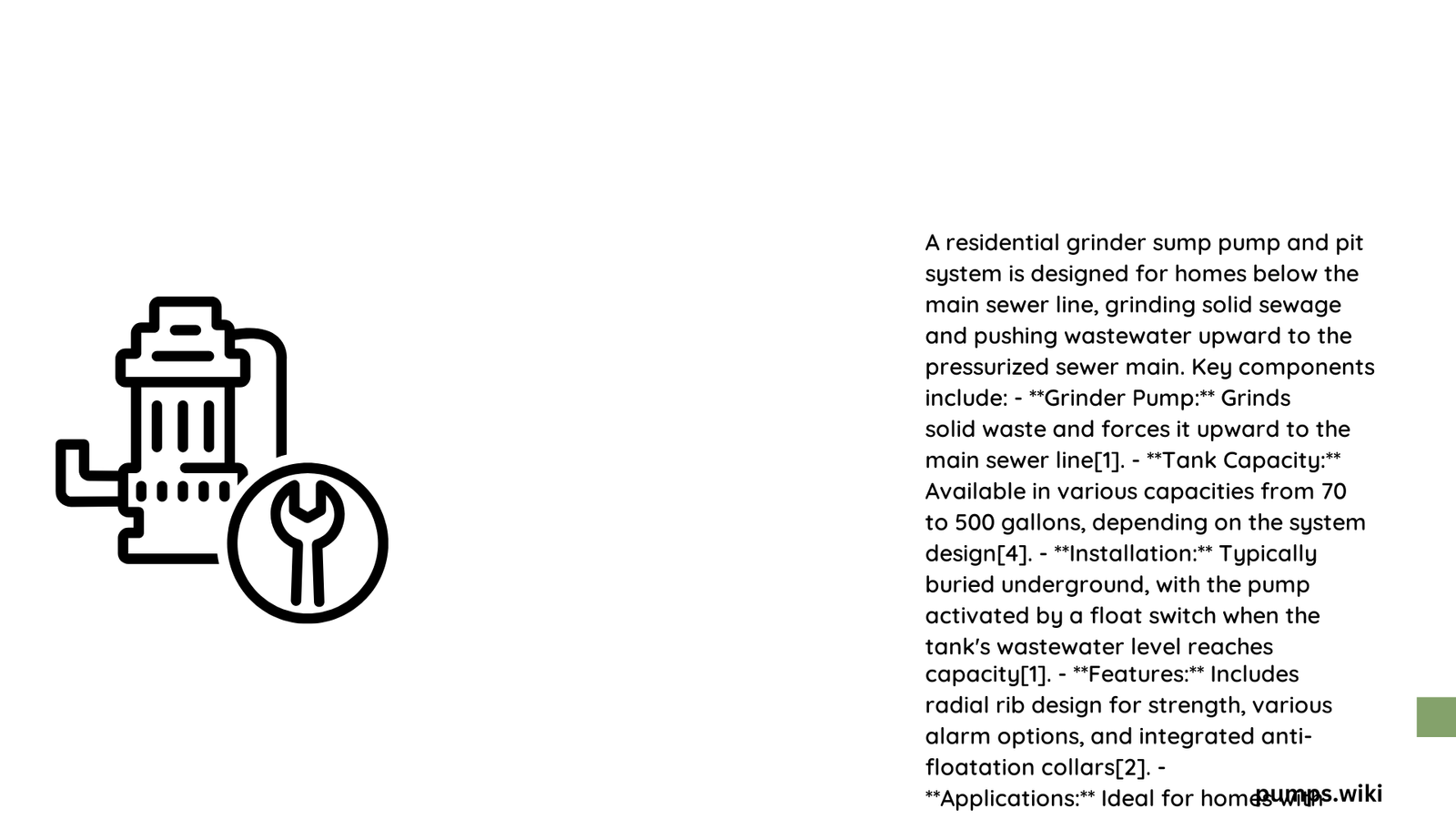Grinder sump pumps represent critical infrastructure for residential properties with challenging drainage needs, providing efficient wastewater management by grinding solid waste into fine particles and pumping them through narrow pipes. These specialized systems ensure seamless sewage transportation in areas with complex topographical constraints, preventing potential backup and environmental contamination while maintaining optimal residential plumbing functionality.
What Makes Grinder Sump Pump Essential for Residential Properties?
Grinder sump pumps are specialized wastewater management systems designed to handle challenging drainage scenarios in residential settings. Unlike traditional sump pumps, these units incorporate grinding mechanisms that break down solid waste into fine particles, enabling efficient transportation through narrow pipes and challenging terrain.
Why Do Homeowners Need Grinder Sump Pump Systems?
Residential properties with unique geographical characteristics often require advanced drainage solutions. Grinder sump pumps address several critical challenges:
- Terrain Limitations
- Overcome elevation differences
- Manage complex landscape configurations
-
Provide reliable sewage transportation
-
Waste Management
- Reduce large solid waste into manageable particles
- Prevent pipe blockages
- Minimize potential system failures
What Are Critical Installation Requirements?
| Requirement | Specification |
|---|---|
| Minimum Distance from Structure | 10 feet |
| Basin Diameter | 3 feet minimum |
| Basin Depth | 6 feet recommended |
| Lid Elevation | 3 inches above grade |
How to Select the Right Grinder Sump Pump?
When choosing a grinder sump pump for residential use, consider these key factors:
- Horsepower Range: 1-2 HP
- Flow Rate: 20-40 GPM
- Head Height Capacity: 25-35 feet
- Electrical Compatibility
- Manufacturer Warranty
What Maintenance Practices Ensure Longevity?
Effective maintenance involves:
- Regular Inspections
- Check basin condition
- Verify electrical connections
- Test alarm systems
- Quarterly Professional Evaluations
- Annual Comprehensive System Assessment
What Are Potential Installation Costs?
Cost considerations include:
- Equipment: $1,000 – $5,000
- Labor: $50 – $150 per hour
- Total Installation: $3,000 – $10,000
How to Troubleshoot Common Issues?
Potential problems and solutions:
- Clogged Discharge Pipes
- Regular cleaning
- Professional inspection
- Float Switch Malfunction
- Annual replacement
- Periodic testing
- Electrical System Failures
- Professional diagnostic checks
- Backup power considerations
Expert Recommendations

Successful grinder sump pump implementation requires:
– Professional installation
– Regular maintenance
– Understanding specific property requirements
– Investing in quality equipment
References:
– Regulations for Private Outdoor Residential Sewage Pumps
– Sewage Grinder Pump Installation Requirements
– Complete Sewage Grinder Pump Guide
